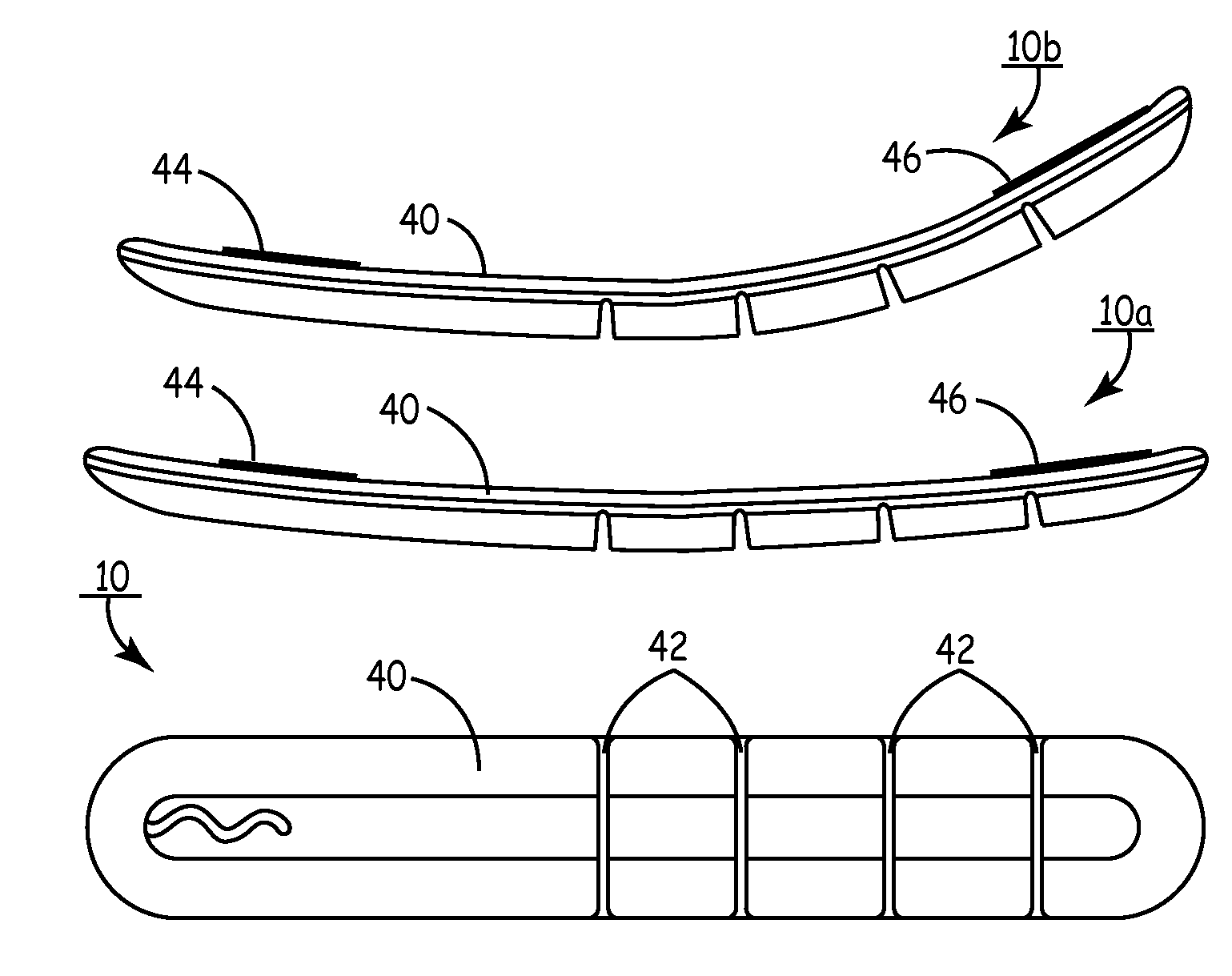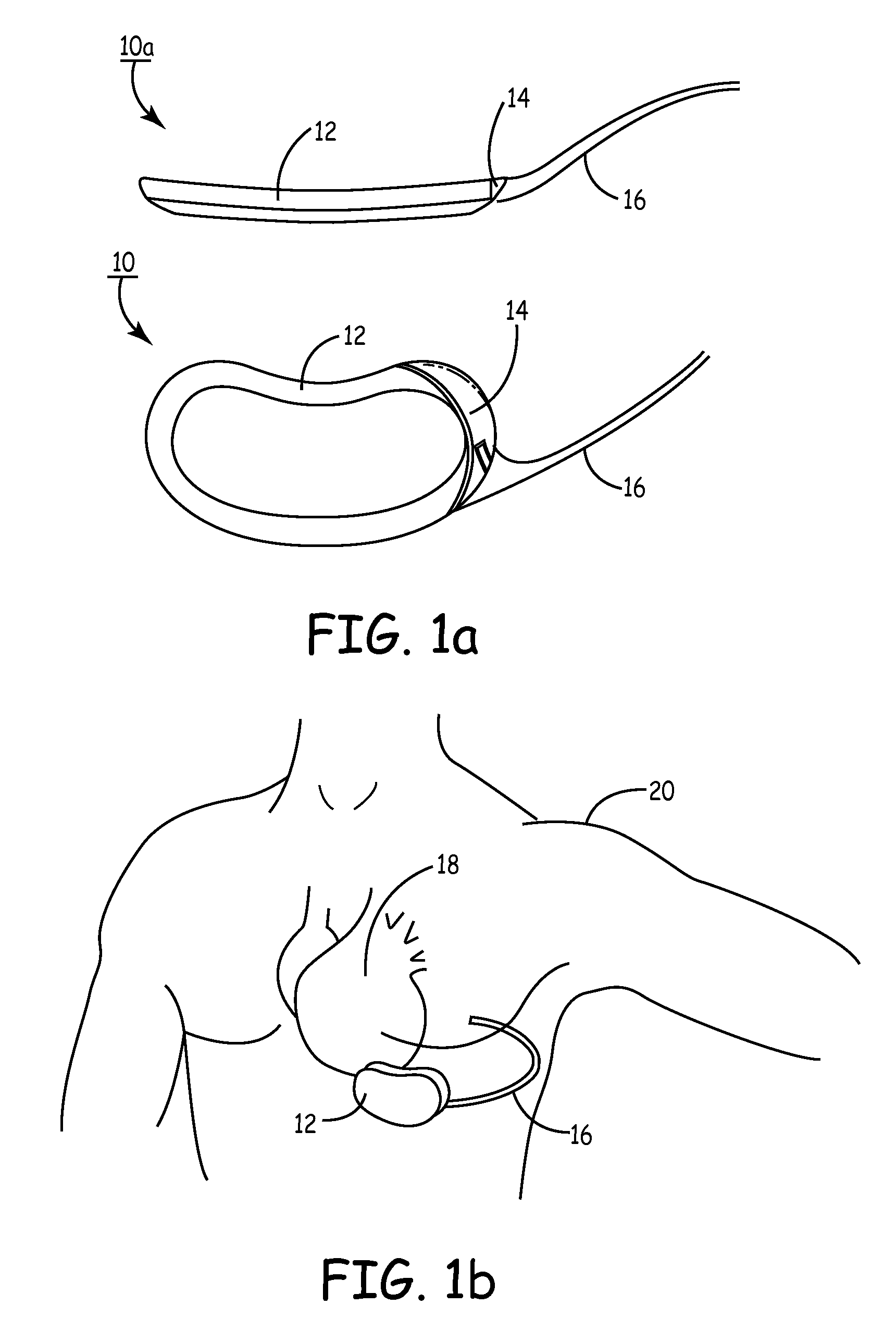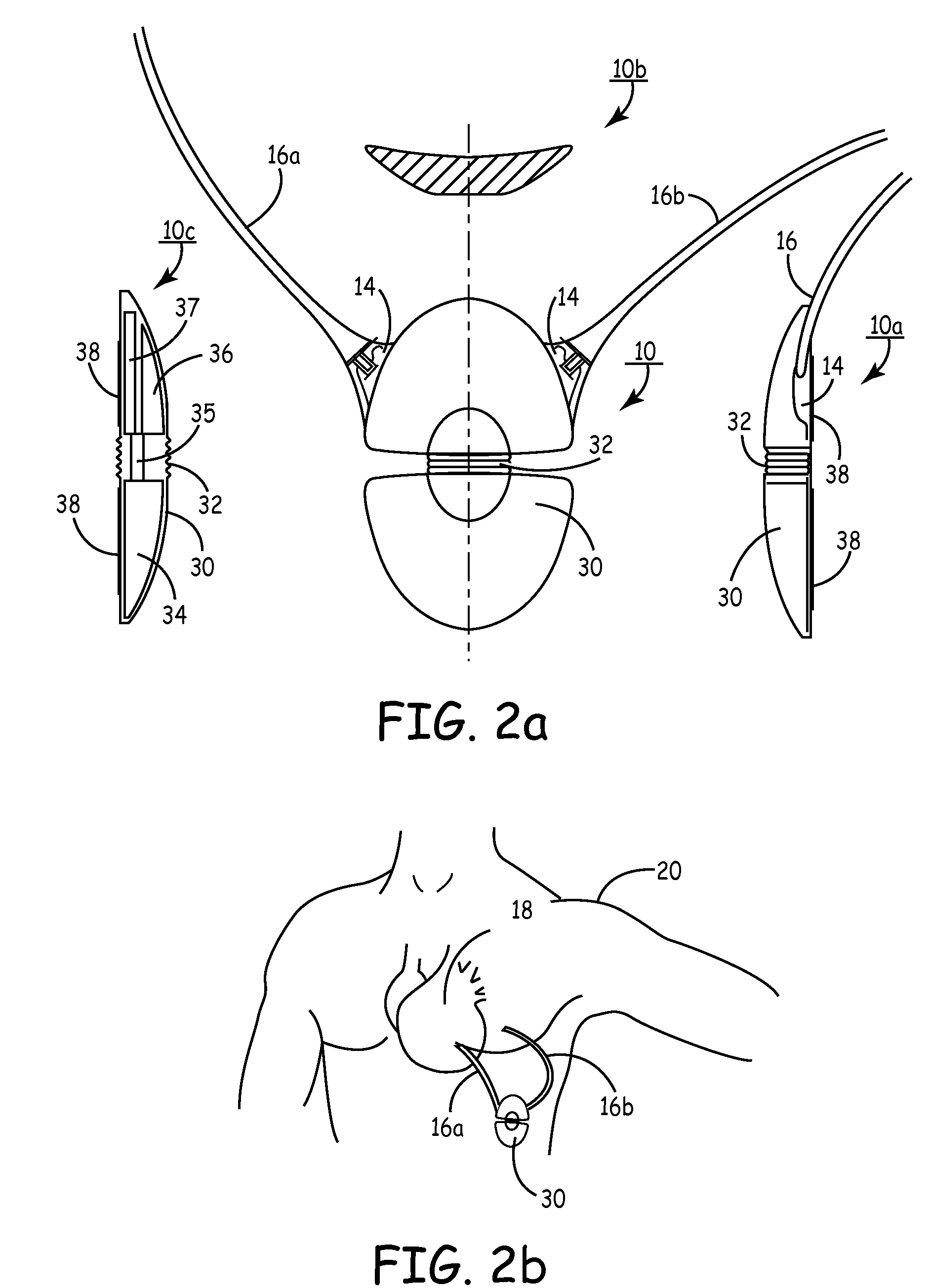Subcutaneous cardioverter-defibrillator
a cardioverter and subcutaneous technology, applied in the field of implantable cardioverter defibrillators, can solve the problems of prohibitively expensive implanting of currently available imds in all such patients, difficult to implant in some patients, and high cost of imds and implant procedures
- Summary
- Abstract
- Description
- Claims
- Application Information
AI Technical Summary
Benefits of technology
Problems solved by technology
Method used
Image
Examples
first embodiment
[0061]FIG. 1A depicts a multi-planar view of the present invention. SubQ ICD 12 is an ovoid, substantially, kidney-shaped housing with connector 14 for attaching a subcutaneous sensing and cardioversion / defibrillation therapy delivery lead 16. SubQ ICD 12 may be constructed of stainless steel, titanium or ceramic as described in U.S. Pat. Nos. 4,180,078 “Lead Connector for a Body Implantable Stimulator” to Anderson and 5,470,345 “Implantable Medical Device with Multi-layered Ceramic Enclosure” to Hassler, et al. The electronics circuitry of SubQ ICD 10 (described herein pertaining to FIG. 21) may be incorporated on a polyamide flex circuit, printed circuit board (PCB) or ceramic substrate with integrated circuits packaged in leadless chip carriers and / or chip scale packaging (CSP). In one of the views, the concave construction of SubQ ICD 12 is illustrated. The minor concavity of the housing of SubQ ICD 12 follows the natural curve of the patient's median ribcage at about the cardia...
second embodiment
[0064]FIG. 2A is a multi-planar view of SubQ ICD 30, the present invention. SubQ ICD 30 is a convex, flexible ovaloid-shaped housing with connectors 14 (2 shown) for attaching 2 subcutaneous sensing and cardioversion / defibrillation therapy delivery leads 16A and 16b. SubQ ICD 30 may be constructed of stainless steel, titanium or ceramic. View 10A is a side view of SubQ ICD 30 showing the tapered housing 30, a mid-line flexible joint 32, connector 14, lead 16 and active can electrode 38. The active can electrode 38 allows sensing and cardioversion, defibrillation and / or pacing therapy delivery between the SubQ ICD 30 and one or both leads 16A or 16b. The jointed housing 30 allows physician flexibility in selecting implant locations and accommodates variances in size and weight of patients for implant. Additionally, the flexible housing provides less patient discomfort in sitting, bending over and / or during normal torso movement because the configurations allows dynamic adjustment to ...
third embodiment
[0066]FIG. 3A is a multi-planar view of SubQ ICD 40. SubQ ICD 40 is an elongated slender ellipsoid with sections of partially articulating dynamic segments having surface mounted subcutaneous sensing and cardioversion / defibrillation therapy delivery electrodes 44 and 46. SubQ ICD 40 may be constructed of stainless steel, titanium or ceramic or equivalent. View 10A is a top view of SubQ ICD 40 showing the segmented construction. Electrodes 44 and 46 located at opposite ends of SubQ ICD 40 are typically 100 mm2 to 1000 mm2. View 10b is a further top view showing the dynamic flexibility of SubQ ICD 40 in which it assumes a dynamically adjustable, compressive and tensile opposing surfaces when implanted outside the thoracic cavity over the ribs. Specifically, in its normal position, SubQ ICD 40 is substantially flat both at the top and bottom surfaces. However, when implanted, SubQ ICD 40 dynamically forms a concave and convex surface at the flat top and segmented bottom surfaces when t...
PUM
 Login to View More
Login to View More Abstract
Description
Claims
Application Information
 Login to View More
Login to View More - R&D
- Intellectual Property
- Life Sciences
- Materials
- Tech Scout
- Unparalleled Data Quality
- Higher Quality Content
- 60% Fewer Hallucinations
Browse by: Latest US Patents, China's latest patents, Technical Efficacy Thesaurus, Application Domain, Technology Topic, Popular Technical Reports.
© 2025 PatSnap. All rights reserved.Legal|Privacy policy|Modern Slavery Act Transparency Statement|Sitemap|About US| Contact US: help@patsnap.com



